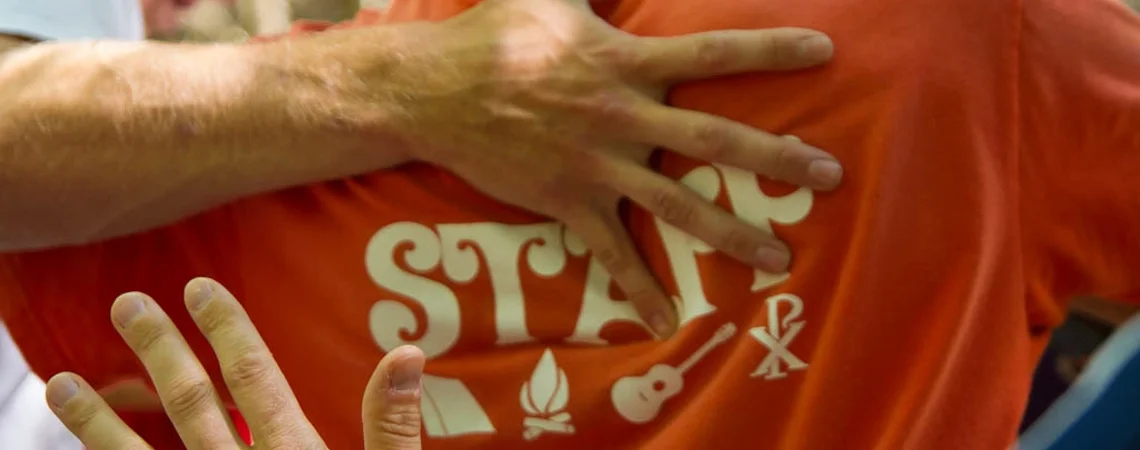We are excited to share with you a short series about Slideshows, a great alternative marketing technique for summer camps that was introduced to us on CampHacker 8: Why Go to Camp Fairs? by our 5th Chair guest host, Paul Sheridan.
Here are some tips on how to host successful slideshows. Please keep in mind that I’ve come up with all of these based on trial and error, and none of them are written in stone. If you decide to give this a try, I encourage you to tweak, make these more appropriate to your own camp community, and go through your own process of trial and error.
- Pick your slideshow locations based on the momentum you have going in a particular community, and the enthusiasm of the family that’s going to host. We have our core cities, like most Camps do. For us, it’s basically the big cities on the West Coast. We host slideshows in those cities every year. The second criteria I use for picking slideshow locations is the enthusiasm of the family that’s hosting. If they’re jazzed to host, chances are it will be a successful show. If not, you’re running the risk of a dud.Every year, we pick a couple of what I think of as “satellite cities.” These are cities where we don’t have a big presence, but we have a few kids and a motivated host. Montreal probably seems like it doesn’t fit in the list of cities above, but we have a motivated host there who is hooked into a school and can put 30 people in a room who want to hear about Four Winds. I’ll fly to almost anywhere to talk to that crowd.If you are a Camp that’s just starting out with slideshows, in fact, I would recommend using the enthusiasm of the host family as the first criteria for selecting your locations. Don’t twist someone’s arm to host just because it’s your biggest city. And certainly don’t try to schedule 18 shows in your first year. Pick two or three excited families and build from there.
- Give your host families good information about what you expect of them, and take as much off their plate as you can.These families are busy, and they’re doing you a favor. Make it easy on them. We ask our host families to put out a few snacks and drinks and invite people they know. We even send them pre-stamped postcards to use as invitations. We take care of everything else. We also don’t post the families’ addresses on our website or other public internet forums – we ask people to call our office. This sets the host families at ease that their house isn’t going to be overrun.
- Invite, invite, invite. You’ve got to let people know these shows are happening. Send postcards, announce them on your website and social networking feeds. Tell people on the phone and over email. Invite prospective families, current families, counselors, alums, everybody. That interaction is what you’re looking for. You probably have amazing counselors. This is an opportunity for prospective families to see that first hand.
- When it comes to AV needs, be totally self-contained.We learned this one quickly. Audio video setups are easy when you know what to expect. We travel with a computer, projector, speakers, and a screen that folds up and goes in a ski case for travel on the plane. We have a bag of wires and adapters that can work in any configuration. We have an adapter that lets three prong plugs work in two prong outlets (I learned that one after my first time doing a show in an old house). We even bring our own extension cord. Your show will always work, you’ll impress the host family, and you won’t be stressed out all the time.
- Be open to each slideshow having a different feel, and ultimately a different purpose.I’ve done shows with 50 people and with 3. I’ve done shows where there were only alums and currently families – not a single prospective. I’ve done shows with the opposite – only prospective families. Every show is a little different, and in the over 100 that I’ve done, I can only think of a handful that weren’t worth doing. They’re all an opportunity to connect with people about Camp, and that’s always good. No interaction with someone who cares about Camp is wasted.Stay flexible in your presentation. My 10-minute talk is directed at new families. If it’s all returners, I drop it and we just hang out and watch the slideshow.
- Make sure your slideshow (or video) is evocative of what it feels like to be at your camp.I don’t imagine that every Camp director reading this will copy my format, and you shouldn’t. You should find one that works for you. But most of these things will involve some variation of video or photos projected onto a screen or shown on a TV. That’s an opportunity to appeal to a part of a person’s brain that can’t be accessed in a purely verbal presentation. Don’t waste it. If you’re not good at these things, chances are someone on your summer staff is. Give them a hundred bucks to put together something that feels like Camp.
- Keep your presentation tight.This is another one we learned the hard way. We’ve found we get better attendance on school nights than on Fridays or weekends (your mileage may vary), but we have to keep things moving so people can get home at a reasonable hour. Set up your night so you have an informal time after the formal presentation, so people who want to linger can and people who want to get home can do so without being awkward.
- Sell the benefit.I learned this one from Steve Jobs. If you’ve ever noticed in his keynotes for Apple, he’s always telling you about how much better your life is going to be if you buy his latest device. He sticks to this principle even to the detriment of skipping over some of the details of the device. The Mac-obsessed blogs fill in the details after the fact.Same deal with a Camp slideshow. Your Camp has very cool activities, cabins, and details of program, but people love it because it’s changed their lives, or their kids’ lives. A kid can learn to sail at Four Winds, or the local yacht club. At Four Winds, he’s also going to feel that he’s a part of something bigger than himself, he’s going to make friends for life, and he’s going to be surrounded by amazing role models. That’s what I want parents to walk away with after the slideshow. Details can be filled in with the Q&A, informal conversations afterwards, literature, or your website.
- Follow up. Call prospective families to check in with them a week or so after the show, and send the host family a handwritten card thanking them. You’ll leave a good impression.
- Adjust every year.If we hang out at a conference, I’ll tell you all the mistakes I’ve made to arrive at these pearls of wisdom. We tweak things a bit every year, and you should too. You have to figure out what works for you, and what works for your community. Every year that I’ve done this, I think we’ve done a better job of putting our best foot forward.
We in the summer camp business have a challenge that the people that write the checks usually don’t get to experience the magic of Camp directly. At slideshows, they get to feel it a little bit.
Good luck!
Writer Paul Sheridan is the Director at Four Winds * Westward Ho Camp on the San Juan Islands of Washington state. These days you can find him cramped in coach, flying to another slideshow.



